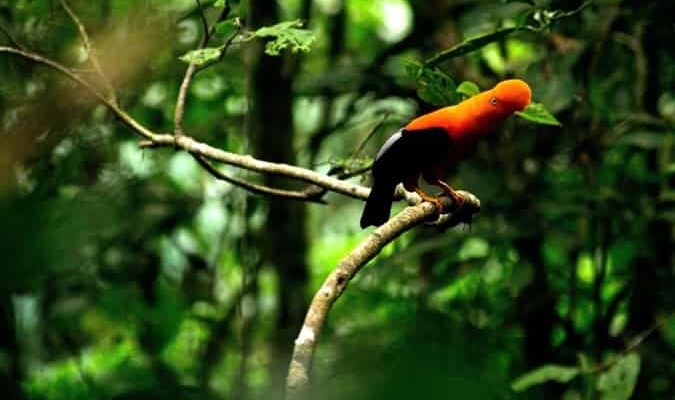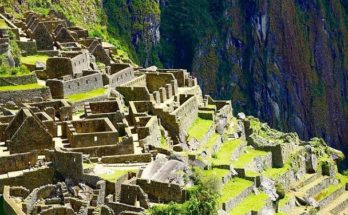For the second consecutive year, five Peruvian destinations have earned a spot in the Green Destinations Top 100 People’s Choice Award 2025, an international recognition that highlights destinations around the world for their outstanding practices in sustainability. This prestigious award celebrates those locations that inspire others through their dedication to sustainable tourism and environmental stewardship. The five Peruvian destinations are the National Park Tingo María (Huánuco), Los Órganos (Piura), Kuélap and Gocta (Amazonas), the Allpahuayo Mishana National Reserve (Loreto), and the Cavinzas Islands and Palomino Islets (Callao). In the 2024 edition, these destinations were already recognized as winners, demonstrating their ongoing commitment to sustainable practices.
The Importance of Sustainability in Peru’s Tourism Industry
Peru is renowned for its diverse tourism offerings, which range from breathtaking landscapes to rich cultural experiences. As one of the top ten countries in the world for biodiversity and natural resources, it has become a synonym for nature and ecological richness. The Green Destinations Top 100 People’s Choice Award has been a key platform for recognizing the global importance of destinations that prioritize sustainability. Instituted in 2014 (with the exception of 2015), this award recognizes 100 destinations annually for their efforts in promoting sustainable tourism. Since 2020, Peru has become a part of the global community of sustainable tourism destinations, earning recognition and acclaim for its eco-conscious initiatives.
The national government, through the Ministry of Foreign Trade and Tourism (Mincetur), has played an instrumental role in supporting these destinations. This support, particularly through the Ministry’s Vice Ministry of Tourism, has been complemented by collaboration with various stakeholders, including the National Service of Natural Protected Areas (Sernanp), regional governments, local municipalities, the private sector, and the resident communities. This collective effort underscores the shared responsibility of promoting tourism that respects and preserves the environment for future generations.
National Park Tingo María: A Beacon of Sustainable Conservation
The National Park Tingo María, located in the department of Huánuco, is the second oldest natural area created in Peru, established in 1965. This park protects 4,777 hectares of land, including the picturesque mountain range known as “La Bella Durmiente” and the famous “Cueva de las Lechuzas” (Cave of the Owls). It is home to a wealth of biodiversity and serves as a critical ecological sanctuary.
Green Destinations acknowledges the park’s growing importance as the main tourist attraction in the Huánuco region, not only for its natural beauty but also for its cultural significance. The communities that live in proximity to the park rely on its resources for their livelihoods, making sustainable tourism essential to preserving both nature and the local economy.
The park has embraced participatory conservation strategies that focus on community involvement, gender equality, and the promotion of sustainable practices. Programs designed to empower local communities include training initiatives, gender-focused projects, and awareness campaigns on the balance between personal life and sustainable development. By providing economic opportunities for local residents through eco-friendly tourism activities, the park has made significant strides in ensuring the long-term viability of its resources.
In line with Peru’s national policies promoting human rights and gender equality, the National Park Tingo María has made modifications to its governance structure to ensure the active participation of women in the decision-making process. This inclusive approach strengthens local engagement and supports the park’s sustainable management practices.
Los Órganos: A Coastal Haven of Sustainable Tourism
Located in the province of Talara, Piura, Los Órganos is renowned for its pristine white sandy beaches and crystal-clear waters. It is an ideal destination for activities such as surfing, diving, and snorkeling. The area is also part of the newly established Reserva Nacional Mar Tropical de Grau, a marine reserve that is home to diverse marine life. Green Destinations emphasizes the region’s unique ability to attract visitors by offering opportunities to swim alongside sea turtles and witness the migration of humpback whales between July and October.
The region’s natural beauty is complemented by the local gastronomy, which features fresh seafood and fish dishes. This culinary tradition enhances the experience of visitors, who can enjoy the serene atmosphere of the beaches while savoring the flavors of the Pacific. The peace and tranquility of Los Órganos provide a refreshing escape from urban life, making it a popular retreat for those seeking to reconnect with nature.
Kuélap and Gocta: Archaeological Wonders and Environmental Preservation
Kuélap, a pre-Incan fortress located in the Alto Utcubamba Valley of Amazonas, and Gocta, one of the world’s tallest waterfalls, are two of the most awe-inspiring natural and cultural destinations in Peru. Together, they form a unique fusion of archaeology, history, and natural beauty. The Chachapoya civilization, which once thrived in the region, left behind impressive ruins, including the majestic fortress of Kuélap, while Gocta’s 771-meter drop attracts adventure tourists and nature enthusiasts alike.
However, the region faced challenges related to waste management, with inadequate disposal practices causing environmental degradation. In 2000, the Regional Government of Amazonas initiated a series of discussions with local communities, municipalities, and tourism service providers to address these issues. Through international funding and a multi-sectoral approach, the region implemented waste management programs that have successfully reduced contamination and improved environmental quality.
By 2018-2019, four sanitary landfills were built to manage solid waste, benefiting 83 localities across the Utcubamba Valley. Comprehensive waste management training programs were also conducted to educate the community about segregation, recycling, and the importance of protecting the environment. This effort has not only improved the quality of life for local residents but has also prepared the region for sustainable tourism development, ensuring that the natural beauty of Kuélap and Gocta remains intact for future generations.
Allpahuayo Mishana National Reserve: A Model of Sustainable Resource Management
The Allpahuayo Mishana National Reserve, located in the Amazon region of Loreto, is a vital ecological area that covers 58,069.9 hectares of forested land. The reserve is part of the Napo Ecoregion and includes both white-sand forests and flooded “igapó” forests. These diverse ecosystems are home to a wealth of plant and animal species, making the reserve a hotspot for biodiversity.
The reserve’s creation in 2004 was a pivotal step in protecting the region’s resources and preserving the livelihoods of local communities. Prior to its establishment, the area’s natural resources were often exploited unsustainably, with local and foreign extractors using destructive harvesting techniques. The implementation of sustainable resource management practices within the reserve has helped local communities understand the importance of protecting their environment while still benefiting economically from tourism.
The reserve is a prime example of how tourism can be harnessed as a tool for environmental conservation and community empowerment. By promoting ecotourism and providing opportunities for local people to learn sustainable harvesting methods, the Allpahuayo Mishana Reserve has helped transform local perceptions of conservation, turning it into a source of economic benefit for the region.
Cavinzas Islands and Palomino Islets: A Marine Ecosystem of Global Significance
The Cavinzas Islands and Palomino Islets, part of the National Reserve of Islands, Islets, and Guaneras Headlands, are located in the Humboldt Current’s marine ecosystem, which is known for its high productivity and biodiversity. These islands serve as a crucial refuge for sea birds and marine mammals, including the South American sea lion and Humboldt penguins. The area is also a popular destination for tourists interested in observing these species in their natural habitat.
The reserve, which was established in 2009, has played a critical role in conserving the marine resources of the Humboldt Current. Through careful management and the promotion of sustainable tourism practices, the region has seen an increase in eco-tourism, with visitors flocking to the islands to witness the natural beauty of the area.
As a result of these efforts, the Cavinzas Islands and Palomino Islets have become a model for other marine conservation areas worldwide, showcasing the potential of eco-tourism to contribute to the preservation of marine ecosystems.
Peru’s recognition in the Green Destinations Top 100 People’s Choice Award 2025 highlights the country’s growing commitment to sustainable tourism practices. The five destinations honored – Tingo María, Los Órganos, Kuélap and Gocta, Allpahuayo Mishana, and the Cavinzas Islands and Palomino Islets – are just a few examples of the nation’s rich natural and cultural heritage. Through a collaborative approach involving government bodies, local communities, and the private sector, these destinations have set an inspiring example for the rest of the world. As global interest in sustainable travel continues to grow, Peru’s tourism sector stands as a beacon of hope for preserving the planet’s precious ecosystems while fostering economic development and social equity.



